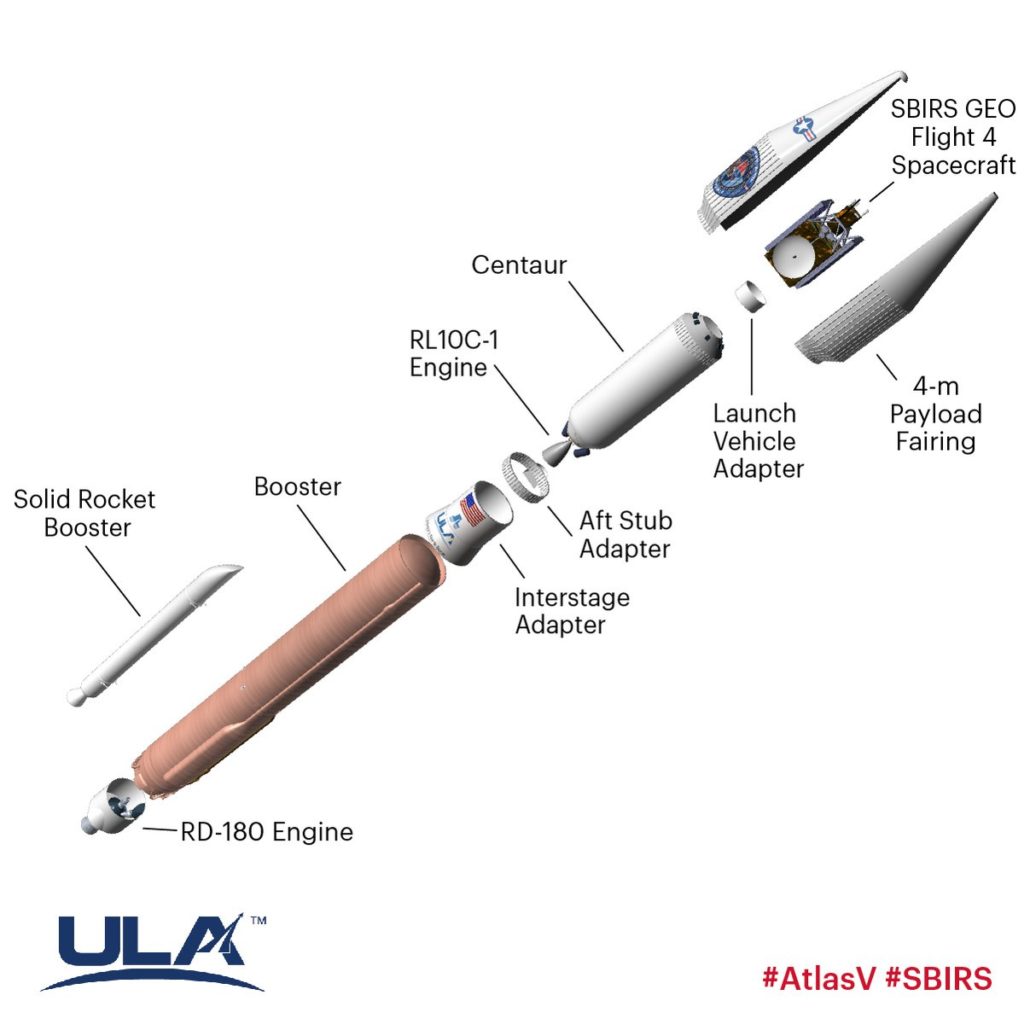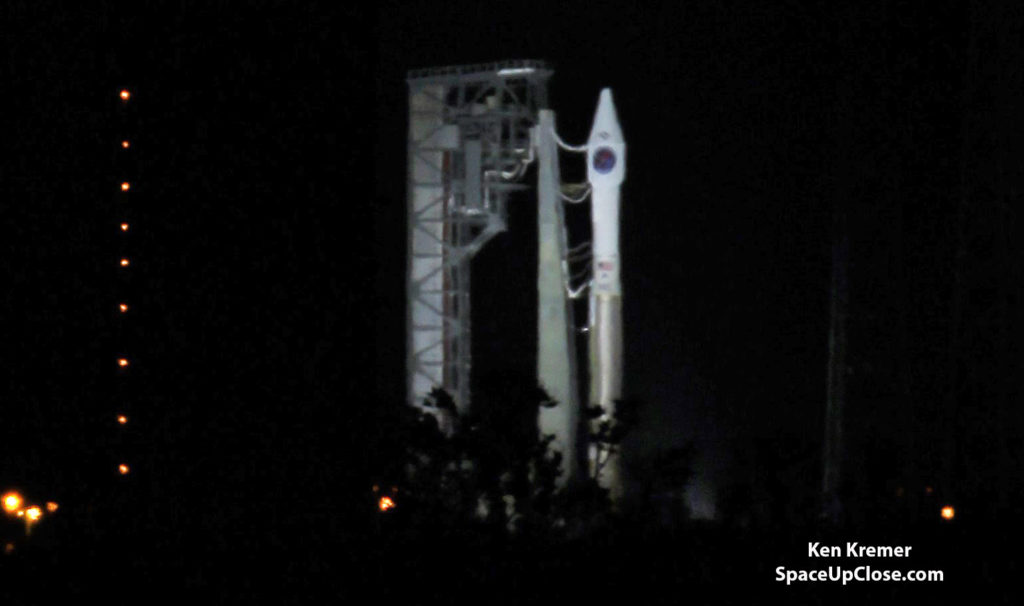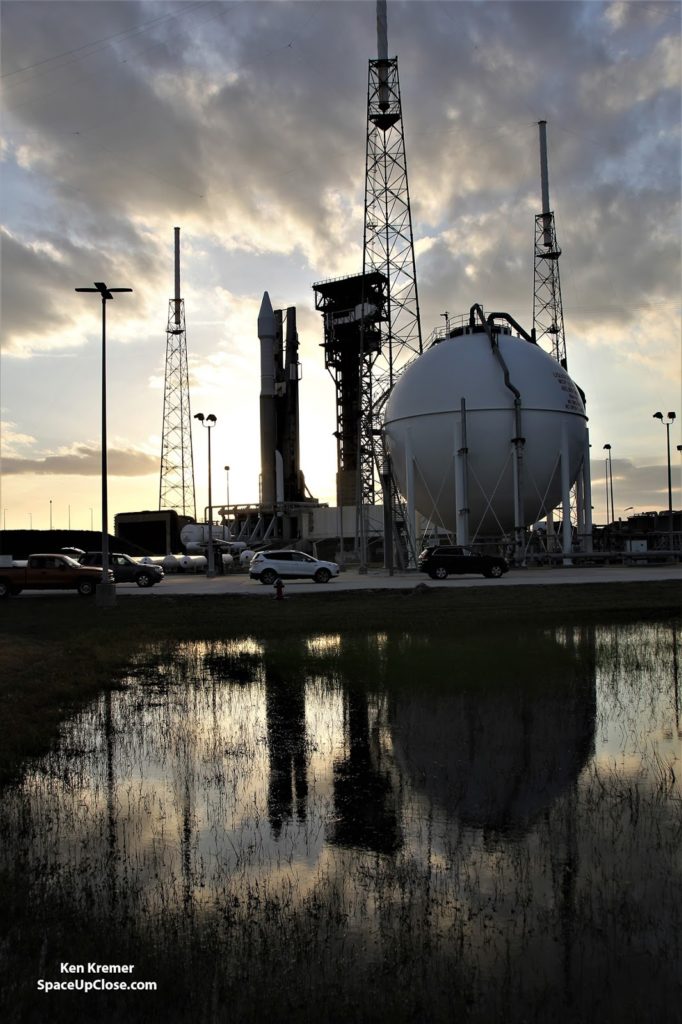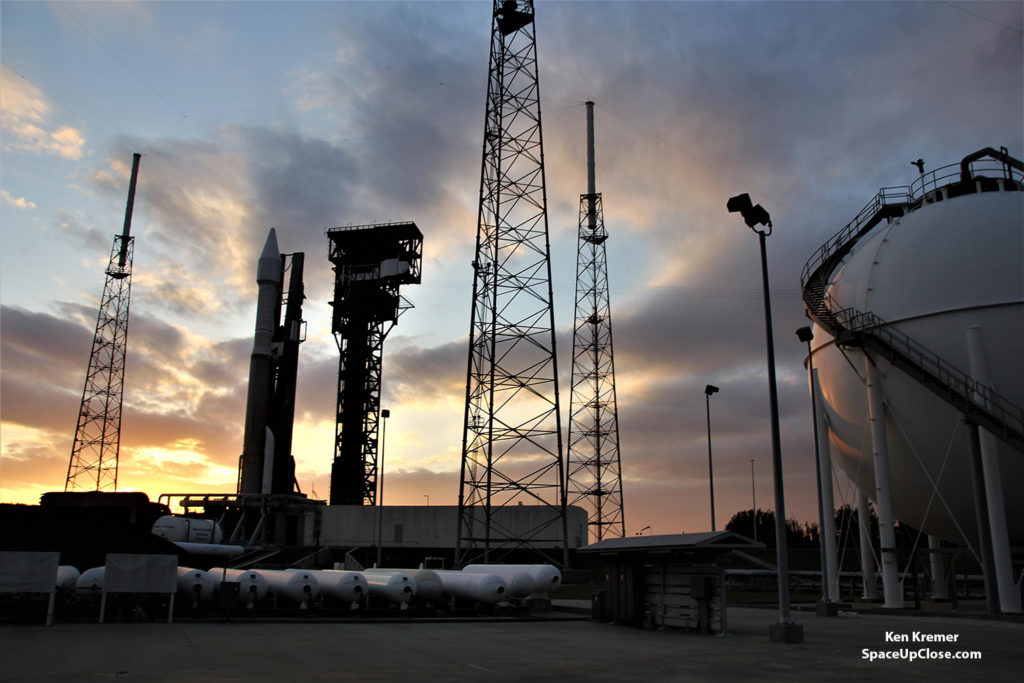Kremer — SpaceUpClose.com — 19
Jan 2018
FL – Thursday nights (Jan. 18) Atlas V launch of the SBIRS Geo Flight 4 infrared imaging
missile warning and detection satellite for the U.S. Air Force was scrubbed
shortly before the planned liftoff due to a ground hardware valve issue with
the “booster liquid oxygen system” announced rocket provider United Launch Alliance.
Atlas V rocket carrying the USAF the SBIRS Geo Flight 4 satellite has been rescheduled to
Fri., Jan. 19 at 7:48 p.m. EST, from seaside
Space Launch Complex-41 at Cape Canaveral Air Force Station in Florida.
Atlas V carrying the SBIRS GEO Flight 4 mission was
scrubbed today due to a ground issue associated with the booster liquid oxygen
system,” ULA said in a statement.
constellation of satellites that will detect incoming nuclear and conventional missiles
in case of an enemy attack on the US and its allies.
perfect weather conditions and crystal clear evening skies the launch team
encountered technical troubles with the fill-and-drain valve used for
the first stage liquid oxygen propellant.
loading the second stage propellants as they worked the balky first stage valve
issue.
pm EST after loading the second stage liquid hydrogen propellant.
of excited spectators had gathered at beaches and lined causeways ringing the
Florida Space Coast for the especially convenient dinnertime blastoff.
been resolved and ULA and the USAF announced launch for a reset to Friday.
7:48 p.m. EST (0048 GMT).
minutes from 7:48-8:28 p.m. EST.
before the planned liftoff at 7:28
p.m. EST here:
current launch weather forecast for Friday, Jan. 18, calls for a 90 percent
chance of acceptable weather conditions at launch time. The primary concern is for cumulus clouds.
backup launch opportunity is on Saturday.
case of a scrub for any reason, technical or weather, the weather chances remain
highly favorable.
Air Force satellite will provide vital early warnings on incoming enemy missiles
that are critical to the defense of our homeland and allies.
(SBIRS) satellite will be launched to geosynchronous transfer orbit some 22,000 miles (36,000
kilometers) over the equator.
194-foot-tall commercial Atlas V booster will launch in the 411 rocket
configuration with approximately 860,000 pounds of sea level first stage
thrust powered by the dual nozzle
Russian-built RD AMROSS RD-180 engine. There is one thrust augmenting solid attached
to the first stage generating approximately 348,500 pounds of thrust.
Remote Sensing Systems Directorate at the U.S. Air Force Space and Missile
Systems Center. Lockheed Martin is the prime contractor, with Northrop Grumman
as the payload integrator. Air Force Space Command operates the SBIRS system,
according to a ULA description.
for Ken’s continuing onsite coverage of Falcon Heavy, ULA and NASA and space mission reports direct
from the Kennedy Space Center and Cape Canaveral Air Force Station, Florida.
Earth and Planetary science and human spaceflight news: www.kenkremer.com – www.spaceupclose.com
– twitter @ken_kremer
 |
|
ULA Atlas V rocket configuration
graphic: Credit: ULA |




